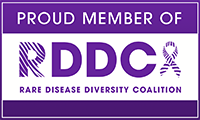Project Overview
While plasmacytoid dendritic cells (pDCs) are associated with normal wound healing, Dr. Barrat’s group and others have shown that pDCs behave differently in scleroderma skin where they are present in increased numbers and they contribute to persistent skin fibrosis.
In normal wound healing, fibrotic tissue is ideally limited to the area of the wound and resolves over time as much as possible. The Barrat group’s preliminary data suggest that, under normal wound healing conditions, the scope and duration of fibrosis are limited because the increased stiffness of the scar and the low levels of oxygen in scar tissue inhibit the pDCs’ production of inflammatory, pro-fibrotic molecules.
However, Dr. Barrat’s group hypothesizes that pDC’s in scleroderma fibrosis get information from their environment that overrides these cues and keeps their production of inflammatory, profibrotic molecules turned on, resulting in widespread and long-lasting fibrosis. Dr. Barrat’s group is investigating the signals pDCs receive from their environment in healthy and scleroderma skin with the goal of understanding how to modulate the aberrant pDC response in scleroderma.
Additionally, they want to understand how signals from the pDCs activate fibroblasts (the primary cells producing fibrotic tissue) and whether modulating the pDC response can also turn off fibroblast activation.

